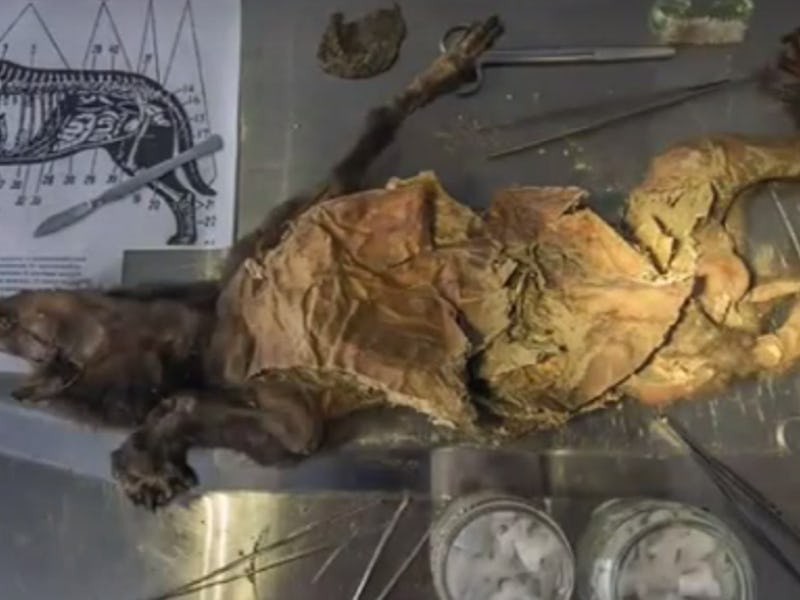What Can We Learn From a 12,450-Year-Old Mummified Puppy?
An astonishingly well-preserved dog corpse could be key to understanding canine evolution.

We’ve found older dog remains. Some dating back more than 36,000 years. But scientists say a perfectly mummified 12,450-year-old puppy found in the ice in East Russia is the oldest intact find ever recovered.
Discovered in 2011 on the Syallakh River, the holy grail of ancient canine bodies has spent the last three years being analyzed before researchers at the North-Eastern Federal University, who finally performed an autopsy this April. Thanks to the wonders of mummification, all the organs were present and undamaged. The results could be key to understanding the evolutionary line of man’s best friend. It’s possible the puppy was there picking up scraps and co-existing near a regional tribe, or — and this is the speculation bit — proto-Spot could be an early example of humans domesticating dogs.
Scientists are still unsure how the pooch ended up frozen, but that’s not really what’s at stake here. There is reason to believe that our canine brothers helped early humans and the humanoid become a dominant species over a relatively short period of time. The mummy dog might give us a window into how that period affected canine biology and what initially facilitated the creation of the dog/human tag team. The thinking now is that, in exchange for a share of the meat, semi-domesticated animals help humans track prey they could kill from a distance.
Dogs limited their own risks and humans were able to take advantage of the dogs natural tracking abilities. Can one frozen dog prove this theory? No, but knowing what was inside him can go a long way in explaining his role in making us into us and wolves into chihuahuas.